An average customer uses multiple channels to communicate with companies. This means the digital marketing landscape is extremely fragmented, with more than 10-15 channels that businesses use. As customer's expectations rise, so does the workload for the marketing management team.

In this article, we look at the various types of marketing attribution models. Whether you are looking for just an introduction to marketing or just brushing up on definitions, we have compiled this overview of marketing attribution models as a guide.
What is Marketing Attribution?
In simple words, marketing attribution is the analytical science of determining which marketing steps contribute to conversions or sales. Marketing attribution is the process of evaluating the touchpoints of a customer's journey on their path to making a purchase. Attribution aims to determine which channels and messages have the most significant impact on the customer's decision to convert to the next step.
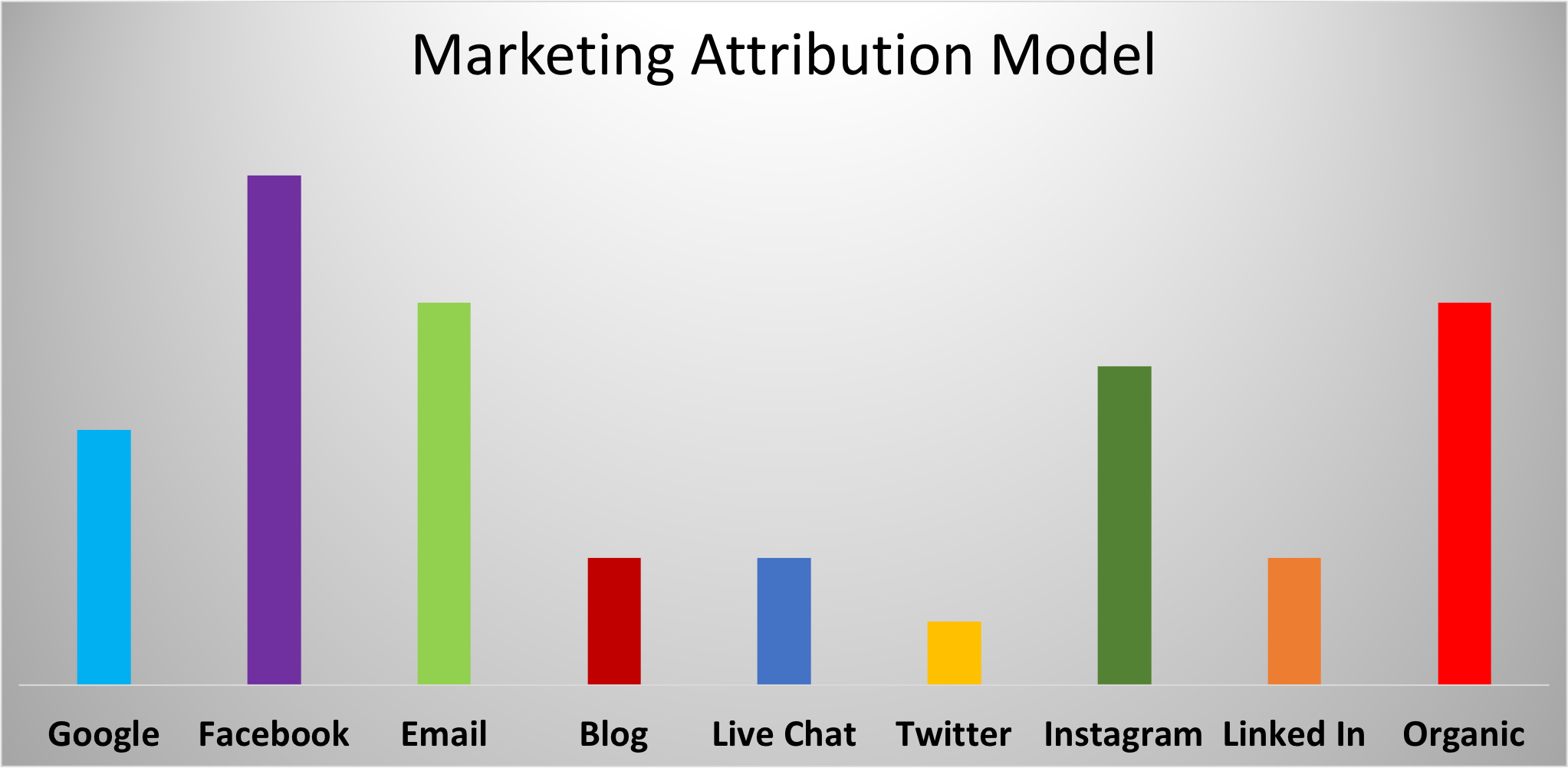
Today, marketers use many attribution models, such as multi-touch attribution, lift studies, time decay, and more. Attribution models can provide these insights into how, where, and when a customer interacts with your branding message. These insights allow the marketing team to alter and customize campaigns as per the customer's needs and improve the ROI by increasing the chances of conversions.
Why is Marketing Attribution Important?
Marketing attribution requires marketing teams to aggregate and normalize consumer data across multiple channels to ensure each interaction is properly looked into.
The advanced marketing attribution model requires the marketing teams to normalize and aggregate consumer data from across channels to ensure each interaction is weighted correctly. For example, suppose a customer is exposed to a google display ad and also sees an email campaign. However, he or she only converts after seeing a special promotion in the email. In that case, you can note that the email campaign played a bigger role in driving the conversion than the google display ad. You can then consider devoting more budget and time to creating more targeted email campaigns.

To achieve this level of granularity of data that is required for effective attribution, you will need advanced analytics platforms such as google analytics that can efficiently and accurately distill big data into customer-level insights that can be used for in-campaign optimizations.
What are the Benefits of Marketing Attribution?
Attribution models can be resource and time-intensive. They can help evaluate a variety of datasets for online and offline campaigns. However, if attribution is done right, then it brings in a lot of benefits:
Optimize Marketing Spends
Using the attribution model, you can have insights into the amount of marketing spend used at various touchpoints of the journey. This data allows you to adjust your marketing budget and social media spend according to the channels that bring in the best ROI for your business.
Increase in ROI
A suitable attribution enables you to reach the correct customers at the right time with a valid message. When you use a good marketing attribution model and use the data correctly, this will increase your business's conversion rates and bring in higher ROI and revenue.
Improved Personalization
Another way to use marketing attribution is to understand your customer responses to which message more and target them at different areas of the customer journey to send them a personalized message or email to convert them to the next step of their journey.
Improve Your Product Development
The insights from attribution gives personal-level information about the customer. Based on this, you can know what the customer likes or dislikes. Using this, you can make changes to the product to target the functionality customers want and need.
Optimized Creative
The attribution model can help evaluate the creative element of a campaign. This allows you to hone messaging and visual elements in addition to a better understanding of when and how to communicate with your users.

What is a Marketing Attribution Model?
A marketing attribution model assigns value to marketing campaigns through statistical analysis and aggregate data. This person-centric approach is why the attribution model is more typically applied to digital marketing campaigns applied to online and offline attribution. Each attribution model relies on different or multiple analytical techniques, and they provide insights into:
- Which touchpoints had the most significant impact on their decision to purchase
- Which messages are a consumer exposed to and on what channel
- The role of brand perception played in the decision to make the purchase
- The role of message sequencing
- Which message gets the best result from each consumer
- Impact of external factors
What are the Different Types of Marketing Attribution Models?
There are two main categories of attribution: Multi-Touch and Single-Touch. Within these categories, there are several types of core models which each provide different insights. Let us look at some below:
Single Touch Attribution Model
Single-touch models are of two types: First-touch and Last-touch attribution models.
First Touch Attribution Model
First touch attribution assumes that the consumer chooses to convert after the first message or ad they encounter. Hence, it gives full attribution to this first touchpoint. This means that if a customer converts and brings in revenue and has other touchpoints after the first touchpoint, the revenue is still attributed to the first touchpoint of the customer. Therefore, regardless of the additional messages seen subsequently after, only the first touchpoint is considered.
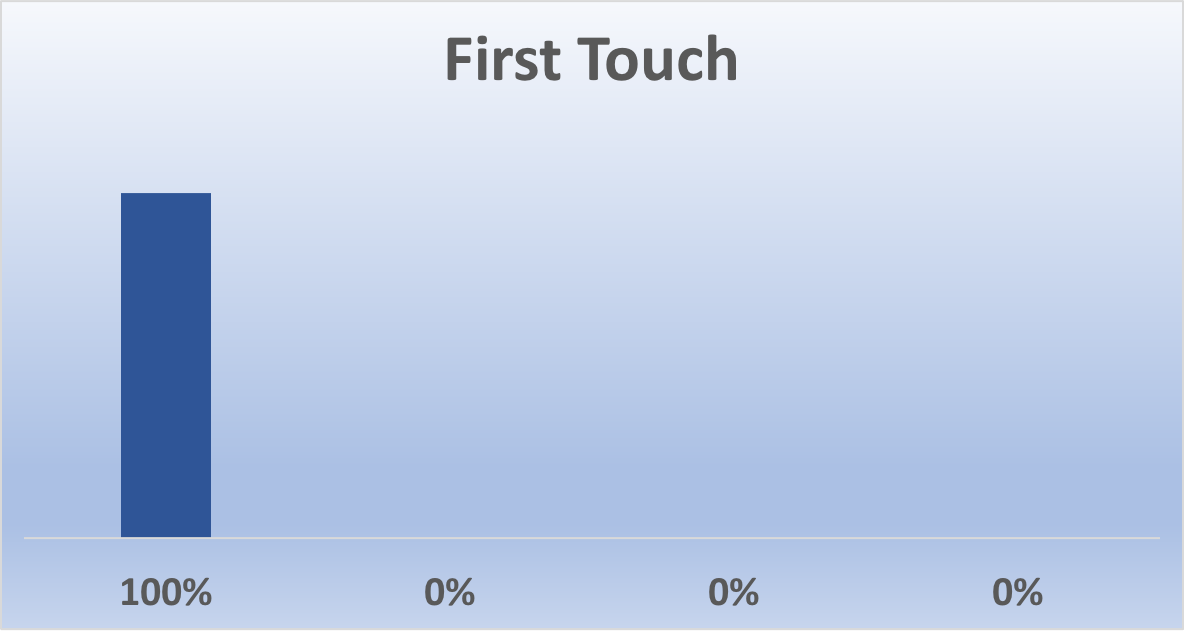
Last Touch Attribution Model
In turn, the last-touch attribution, the full attribution credit is given to the last touchpoint the consumer interacted with before making the final purchase. Hence, in this case, the prior engagement, touchpoints, or interactions are not considered. And no attribution is given to other touchpoints except the final one.
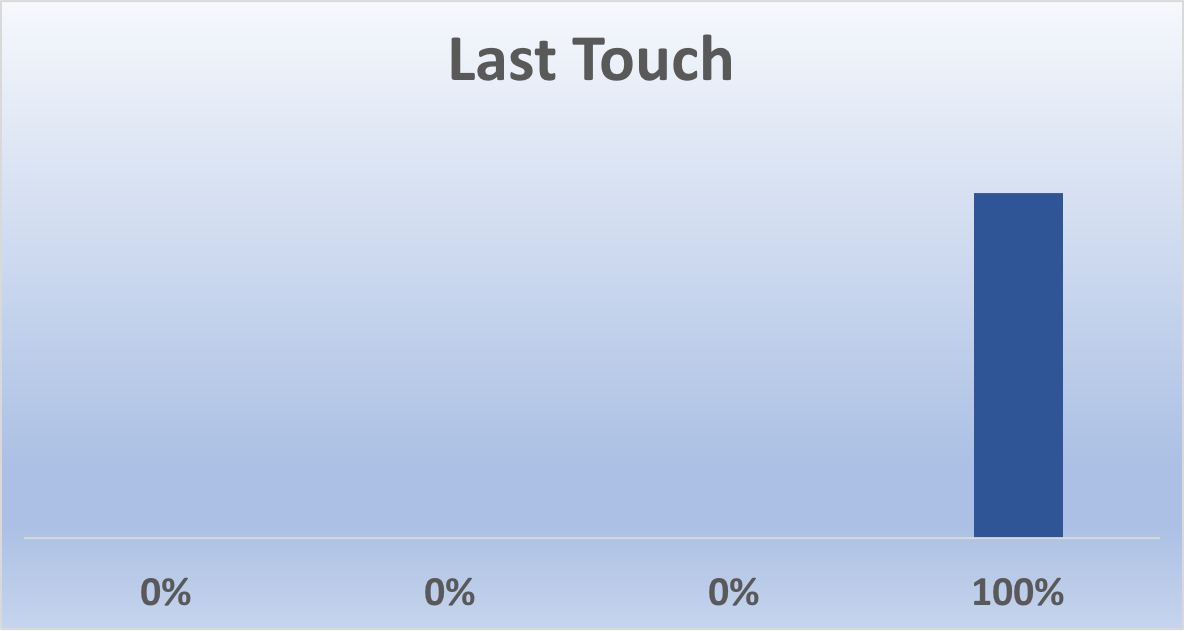
Multi-Touch Attribution Model
The multi-touch attribution model looks at all the touchpoints the customer is engaged with, leading up to the point of purchase. As a result, the multi-touch model is considered a more accurate model compared to the single-touch point model.
Various models within these multi touchpoints are as below:
Linear Attribution Model
Linear attribution model records each touchpoint the customer has engaged with, leading up to the point of purchase. In this model, the attribution weighs each of these interactions equally, giving each message the same amount of credit towards driving the conversions.
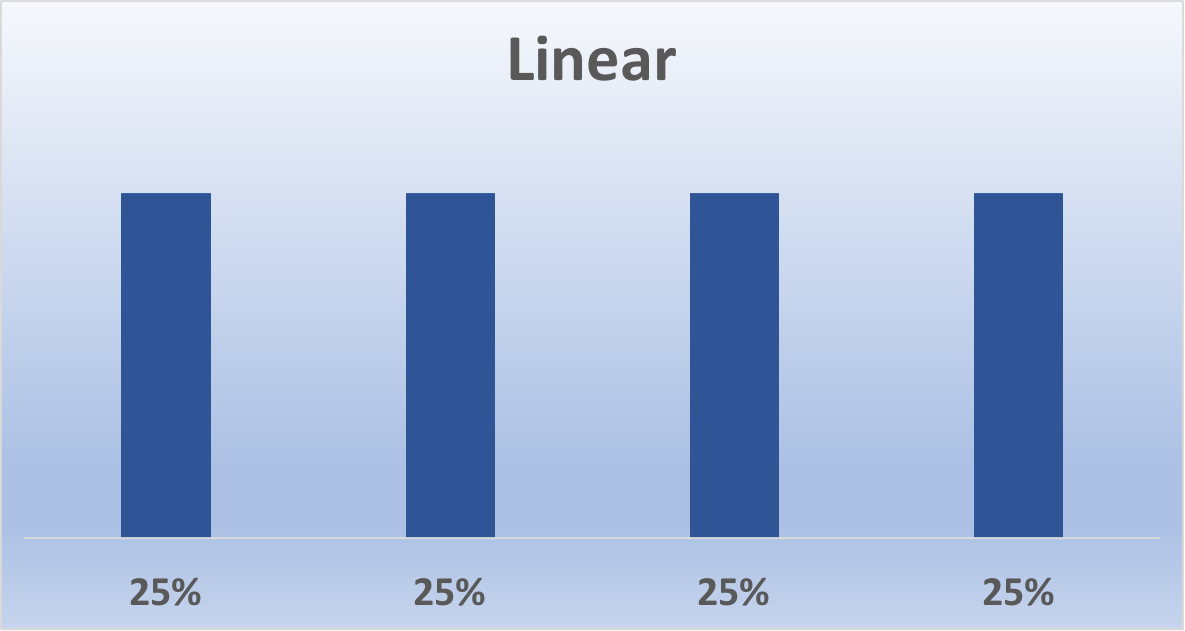
U-Shaped Or Position Based Attribution Model
Unlike linear attribution, the U-shaped attribution model measures engagements separately. This is based on customers' engagement, considering that some interactions are more impactful than other interactions on the journey to purchase. For example, in this attribution, both the first touch and lead conversion touch are each credited with 40% of the responsibility for the lead. The other 20% is divided amongst the touchpoints between the first and the lead conversion touchpoints.
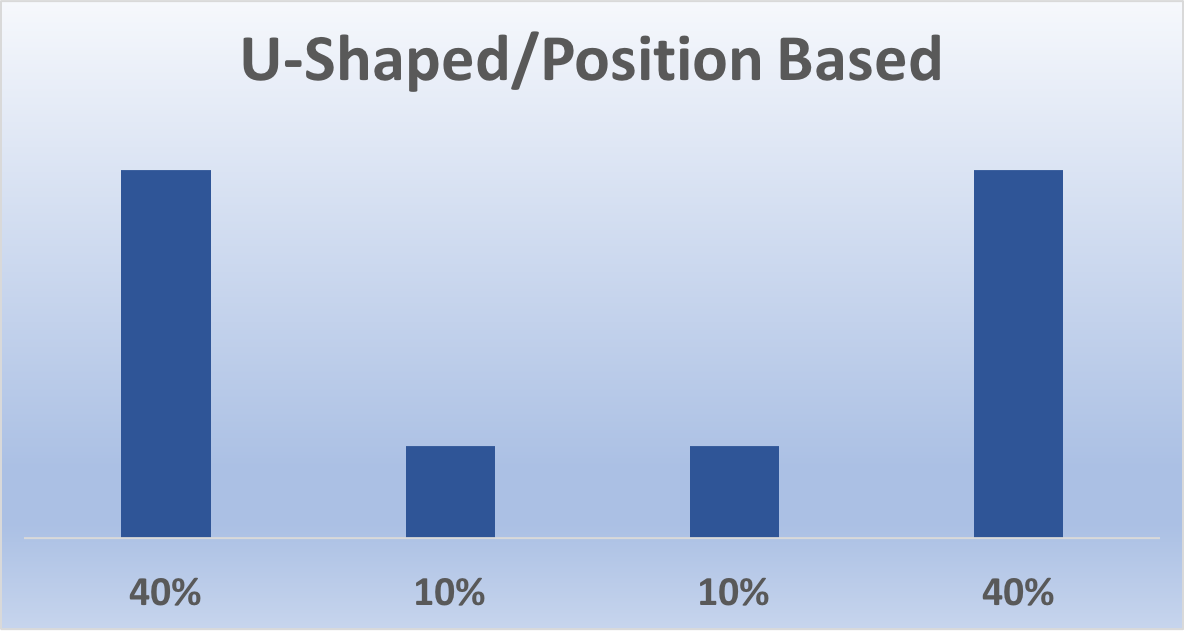
Time Decay Attribution Model
The time decay model weighs each touchpoint differently on the customer's path to purchase. As per this model, the attribution is weighed heavier at the touchpoints engaged closer to the conversion than those engaged early on, assuming that those had a greater impact on the sale.
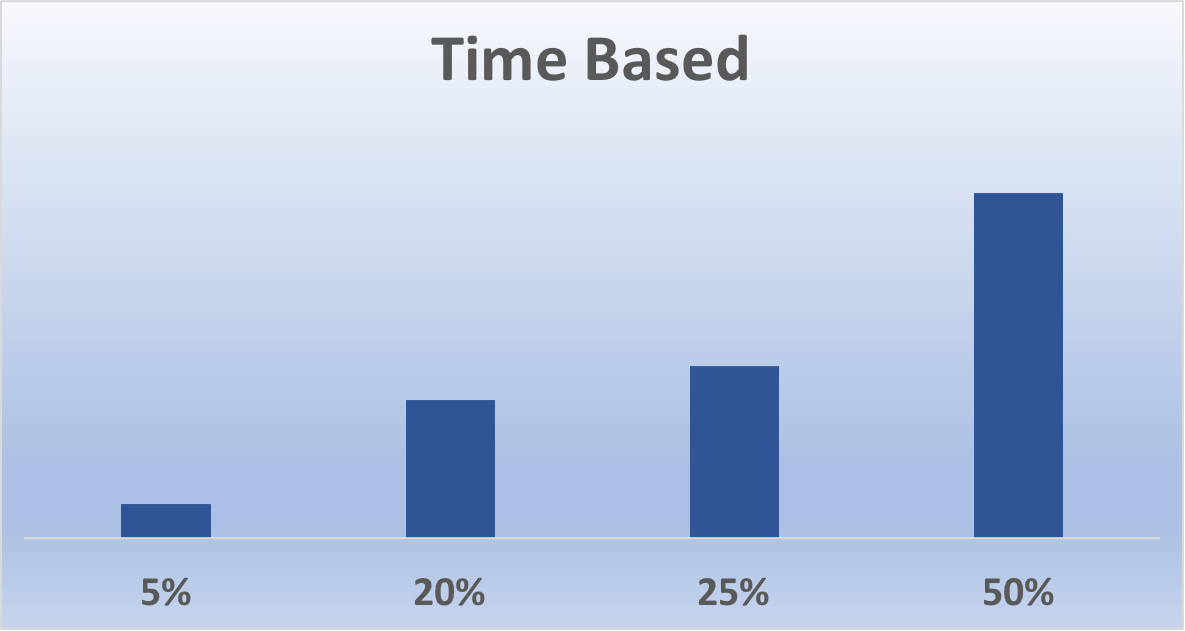
W-Shaped Attribution Model
This W-shaped model's idealogy is similar to the U-shaped model. However, this touchpoint includes one more core touchpoint, also known as the opportunity stage. Thus, the W-shaped model credits the first touch, lead conversion, and opportunity creation, and each receives 30% of the credit. The remaining 10% is divided amongst the additional engagements.
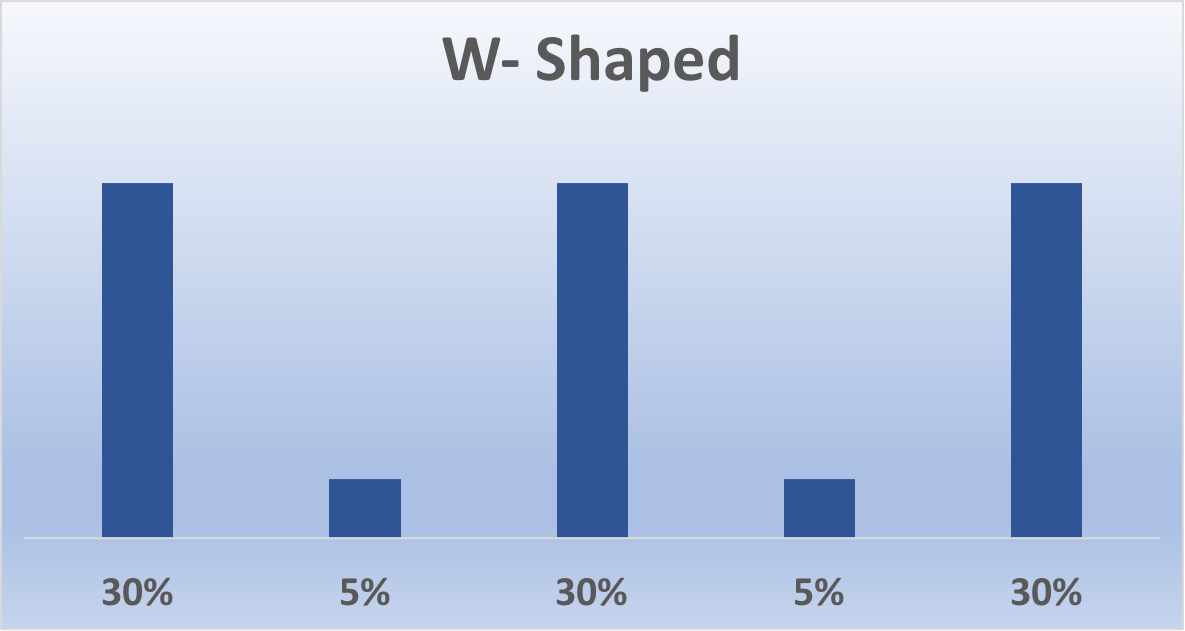
When do you Use Attribution Reports?
Most marketers look into attribution reports to help them decide which marketing channels or pages drive the most conversions. You can use attribution to answer some of the questions below:
- How many leads are generated by my online ad?
- How many leads are generated from my blog?
- How many leads are generated by my email marketing campaign?
- What other content generates the most leads?
- What marketing channels generate the most leads?
- Which page converts most customers?
- Where is the best place to invest my marketing resources?
- Which pages are viewed the most before someone becomes a customer?
Attribution reports pull multiple pieces of information together to show the number of times a blog post or your content has been viewed before the conversion. The information gathered in these reports helps you dissect which types of content perform better. With a better understanding of which ad, post, email, or content generates more leads, you will be able to make better-informed marketing decisions.
Once you find out which type of content generates the most leads, the next step would be to understand which marketing channels are the most successful in lead and customer generation. Once you can have figured out the answers to this question, you can get a deeper understanding of why your content performs the way it does.

Other content on your website can also contribute to conversions besides landing pages, blog posts, and content offers. Your landing pages, homepage, pricing page, about us page, or any other informational page can contribute to conversions throughout your sales funnel.
Running an attribution report based on pages that have been visited and viewed on your website will let you know which pages are frequented the most. The marketing attribution report will help you understand which pages should be pushed and promoted more, which pages need to be optimized, and which pages help to push people down the marketing funnel quicker than others.
How to Get Started with Attribution?
The simplest way to start off with marketing attribution is to set up your business and your business website with google analytics. This will simply help you to see all the clicks and visitors to your site. Follow the business analytics setup guide to set up your basic website attribution.
Here are some simple steps to get started with marketing attribution for your business:
Set Your Goal
The key to starting off with marketing attribution is to first define your business strategy and marketing strategy. You need to set your goals and expectation and what would be considered a successful attribution model. A clear strategy keeps you accountable for your goals and makes it easier to follow your reports. Your key business objectives assist in deciding which attribution model works best for your business. The more advanced your company is on data, the more challenging the attribution goals are. ultimately, it's up to you to decide your model. It is always better to start with simpler goals.

Define Your Channel Goals
Once you have decided on your attribution goals and marketing strategy, the next step would be to focus on your objectives as per channel-specific goals. Start by organizing the goals in your already existing channel. Decide on the desired objective and simplify the measurement of the ROI.
For example, a newsletter will have a measurement of the sign-up of the customer, while a Facebook ad might have a goal of product view.
You need to think of how some channels are more useful for awareness while others are for lead generation and conversions. At this step, we realize that it is harder to measure success goals for each channel separately. This where attribution comes in to assess all the touchpoints of the customer journey and assign the appropriate weightage.
Align attribution with your business goals
Before you go into deciding on the best attribution model, it is important to get the team to understand how data attribution works and how it can make marketing more effective. This will make sure that your attribution objectives align with the company's business goals.
Helping different departments and teams understand the channel ROI and the touchpoints will help everyone understand and find ways to improve the customer journey. This way, you can increase the chances of multiple benefits across different departments.
How Can Deskera CRM Help Your Marketing Attribution?
Tailoring your approach as per the needs of your business while keeping the data you collect integrated with your CRM system. This will provide you the biggest opportunities for lead conversion. Using a good CRM system like Deskera CRM can help you keep track of your sales leads. Integrating your CRM system with your attribution model will help your business move further.
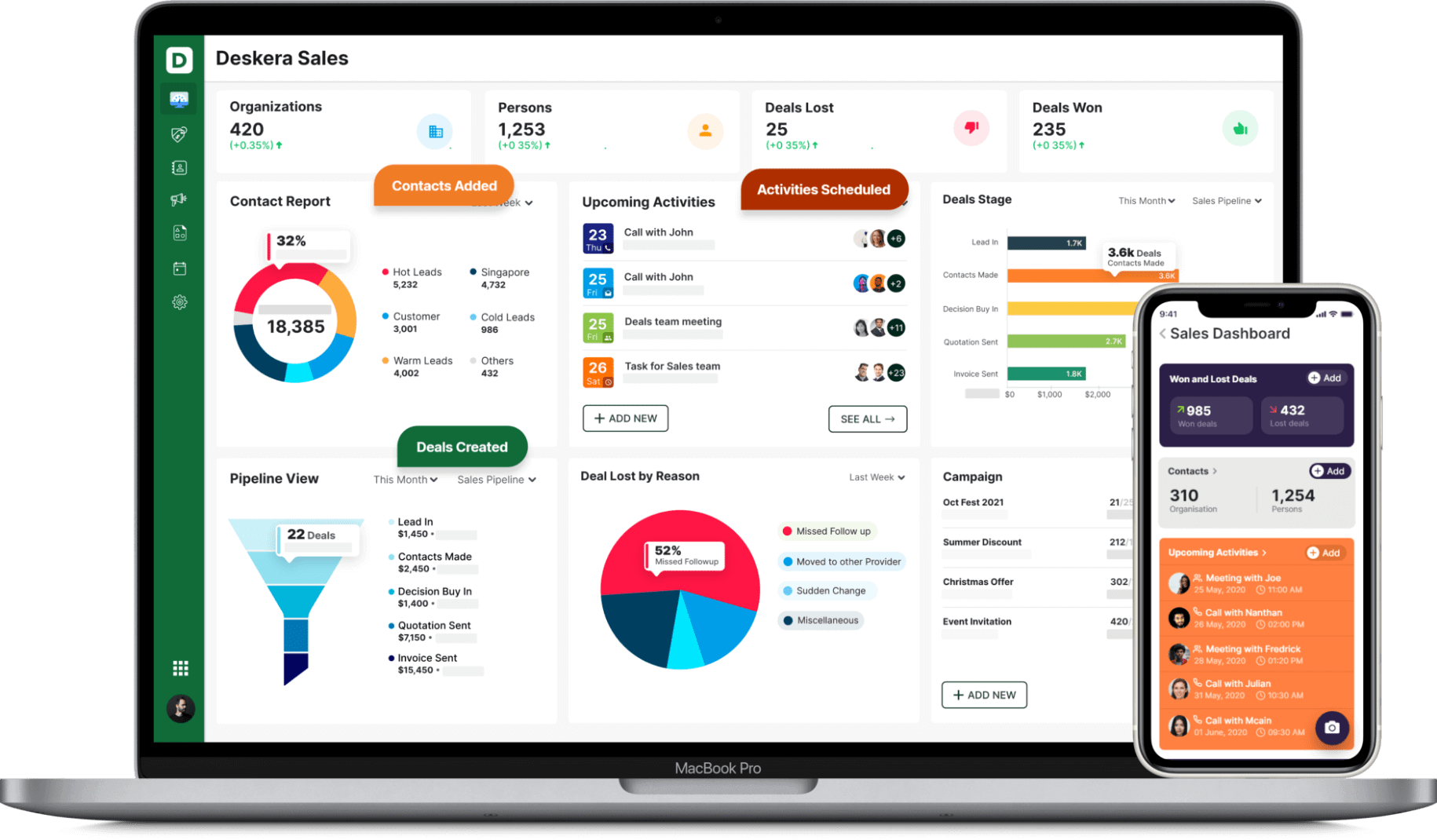
They offer an easy-to-use platform with advanced segmentation and marketing funnels and multiple integrations with other parts of the enterprise. Deskera is affordable with multiple features and is highly recommended for its easy-to-use features and for starting off with your email marketing.
Deskera CRM is a simple, fully-featured platform that can help you with contact and deal administration, sales pipeline management, email marketing campaigns, to name a few. You can generate leads for your business by creating email campaigns and view performance with detailed analytics on open rates and click-through rates (CTR). Deskera CRM is an easy-to-use platform that will assist you in contact and deal management, sales pipeline, email marketing campaigns, customer support, and ticketing management, to mention the important ones.
Key Takeaways
Wrapping up this article, we have discussed in detail how marketing attribution will help your business. To summarize below:
- Marketing attribution is the process of evaluating the touchpoints of a customer's journey on their path to making a purchase.
- Attribution aims to determine which channels and messages have the most significant impact on the customer's decision to convert to the next step
- Benefits of the attribution model include an increase in ROI, marketing budget optimization, and better personalization
- The two main categories of attribution are the Multi-Touch and Single-Touch model
- Single-touch model includes: First touch and last touch attribution model
- Multi-touch model includes: Linear, U-shaped, or Position based, Time-Decay, and W-Shaped models
- Attribution reports help you decide which marketing channels or pages drive the most conversions
As customers explore new channels to engage with on a daily basis and businesses adopt advancing technologies, marketing attribution becomes crucial for centering your marketing departments towards a common goal of increasing sales and revenue generation.







